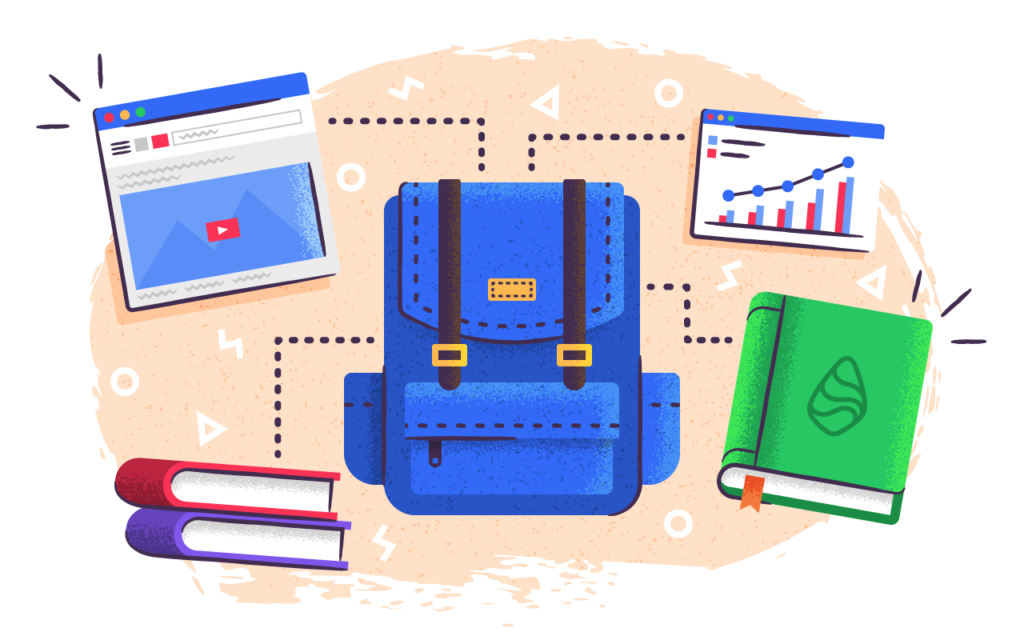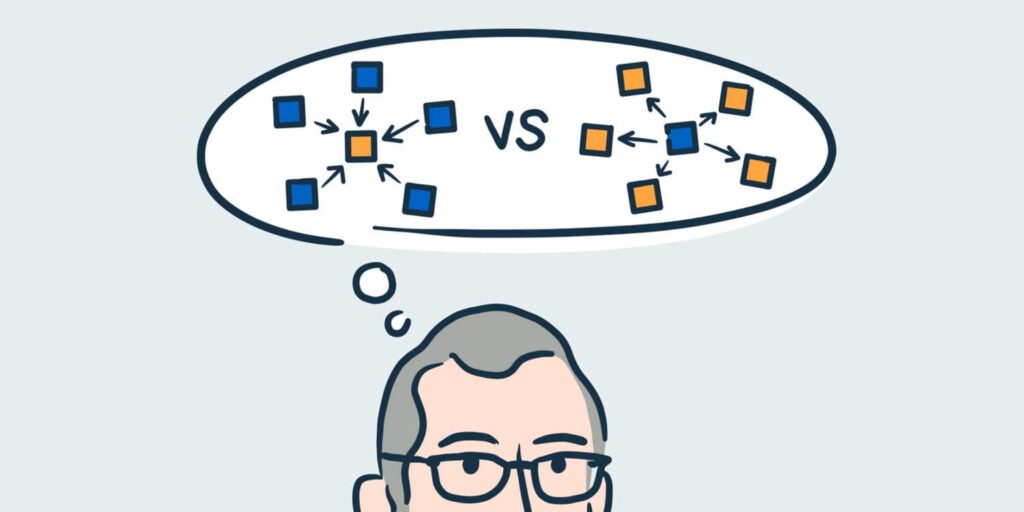The Benefits of Design Education: Unleashing Creativity and Innovation
Welcome to the intriguing world of design education, a field that beautifully blends creativity with practicality and imagination with technology. “The Benefits of Design Education: Unleashing Creativity and Innovation” will enlighten you about the significant role of design education in shaping innovative minds and fuelling modern society's growth.
Design isn't just about aesthetics, or as the adage goes, “making things look pretty.” It's a lot deeper and profoundly impactful than that. It's a way of thinking, problem-solving, and, quite frankly, a way of living. The bridge connects the abstract world of ideas with the concrete world of products, services, and experiences. And this is where design education plays a pivotal role.
Design education is akin to a magic wand that helps students unleash their creativity and innovation, preparing them for the increasingly complex and demanding world. In 2021, a study published in the Journal of Engineering Design emphasised that students who took design courses exhibited a 28% increase in creative problem-solving skills compared to those who did not. This data speaks volumes about the undeniable connection between design education and innovation.
Moreover, a research study conducted by the Design Management Institute revealed that design-led companies outperformed the S&P Index by an astounding 211% over a decade. These companies, like Apple, IBM, and Nike, realised the potential of design thinking, making it an integral part of their strategy and fostering a culture of innovation.
Our journey in the following chapters will uncover how design education encourages out-of-the-box thinking, nurtures empathy, boosts problem-solving skills, and stimulates technological understanding. Doing so not only enhances individual growth but also shapes how we interact with the world, influencing society.
So, buckle up as we dive into the benefits of design education and its profound impact on fostering creativity and innovation. Whether you are a student, educator, or professional, a wealth of knowledge awaits you in the coming chapters, ready to spark a new perspective on design and its transformative power.
Together, let's explore the wonders of design education!
Table of Contents
Introduction

Design education is an exciting realm that covers a wide range of disciplines, from graphic design to industrial design, fashion design, architecture, and much more. It's not just about mastering the technical aspects of these fields; it's a journey that encourages critical thinking, sparks creativity, and fosters collaboration.
When you delve into design education, you quickly realise it's about more than just learning how to use design tools or mastering specific techniques. It's about developing holistic skills to approach problems from different angles, develop innovative solutions, and create meaningful experiences.
Design students are immersed in hands-on projects that challenge them to think deeply about user needs and preferences. By understanding the people they are designing for, they can create products, services, or experiences that truly resonate. It's all about empathising with users and gaining insights into their desires, aspirations, and pain points.
In addition to understanding users, design education teaches students about aesthetic principles. It's not just about making something visually pleasing; it's about understanding how design elements like colour, shape, typography, and composition can evoke emotions and communicate messages effectively. Aesthetics capture attention, create a memorable experience and influence behaviour.
But design education doesn't stop there. It also emphasises the iterative design process, where students learn to refine and improve their work through constant feedback and iteration. Designers rarely create a perfect solution immediately; it's a journey of continuous improvement. This iterative approach encourages students to be open to feedback, learn from failures, and refine their ideas until they reach a satisfactory outcome.
Moreover, collaboration is a cornerstone of design education. Designers rarely work in isolation; they thrive in multidisciplinary teams where diverse perspectives and expertise come together. Collaborative projects allow students to develop essential communication, negotiation, and teamwork skills. Through cooperative efforts, designers learn to leverage each team member's strengths and create outcomes more remarkable than the sum of their parts.
Enhancing Creativity and Critical Thinking
Creativity lies at the heart of design education. It encourages students to think outside the box, explore new possibilities, and challenge conventional norms. By engaging in design projects, students learn to identify problems, analyse them from different perspectives, and generate innovative solutions. This process nurtures their creative thinking abilities and enables them to approach challenges with fresh insights.
Design education also cultivates critical thinking skills. With an A-level tutor, students learn to evaluate design choices, justify their decisions, and consider the implications of their work. They develop a keen eye for detail, honing their ability to spot potential issues and refine their designs accordingly. This critical mindset fosters a sense of quality and excellence, enabling designers to deliver impactful solutions.
Fostering Collaboration and Communication

In our fast-paced and interconnected world, the ability to collaborate and communicate effectively has become more crucial than ever before. And when it comes to design education, these skills take centre stage. Design students are taught the fundamental principles of their craft and encouraged to work in multidisciplinary teams, simulating real-world design scenarios. This collaborative approach not only enhances their learning experience but also prepares them for the dynamic nature of the design industry.
One of the key benefits of collaborative projects is the exposure they provide to diverse perspectives. By working with individuals from different backgrounds and areas of expertise, students gain a deeper understanding and appreciation for other viewpoints. This exposure broadens their horizons and encourages them to think beyond their perspectives, ultimately fostering creativity and innovation in their design process. It's like brainstorming with people who bring unique ideas and insights.
However, collaboration is not just about working together; it's also about effective communication. Design students quickly learn that expressing their design ideas clearly and articulately is essential. They must present their work to their peers and instructors, explaining their thought processes and the rationale behind their design choices. This communication aspect of design education is crucial because it helps students develop the necessary skills to convey their ideas and receive valuable feedback.
The iterative feedback process during collaborative projects is invaluable to design students. By receiving feedback from their peers and instructors, they gain fresh perspectives on their work, identify areas for improvement, and refine their designs accordingly. This feedback loop ensures that their final plans meet the needs and expectations of the intended audience. It also encourages them to think critically and analytically about their work, leading to constant growth and development as designers.
Practical communication skills are particularly vital in design professions. Designers often collaborate with clients, stakeholders, and colleagues throughout their careers. The ability to effectively communicate their design concepts, explain design choices, and understand the needs and expectations of different stakeholders is paramount. By honing their communication skills during their design education, students are better prepared to navigate these professional interactions confidently and clearly.
Empowering User-Centric Design
Design education places a strong emphasis on user-centricity. Students are taught to deeply understand the end-user's needs, desires, and motivations. By conducting user research and usability testing, they gain insights into user behaviours and preferences, enabling them to create products and services that resonate with their target audience.
This user-centric approach leads to the development of products and experiences that are intuitive, delightful, and meaningful to users. It enhances user satisfaction, fosters brand loyalty, and drives business success. Design education equips students with the tools to bridge the gap between technology and human needs, resulting in solutions that truly make a difference in people's lives.
Driving Innovation and Problem-Solving

Design education plays a crucial role in driving innovation across industries. Encouraging students to explore and experiment ignites their curiosity and helps them discover unique solutions to complex problems. Design thinking, a necessary methodology taught in design education, empowers students to approach challenges systematically and creatively.
Designers are trained to identify opportunities, redefine problems, and ideate potential solutions. They learn to prototype and iterate on their ideas, gathering feedback and continuously refining their designs. This iterative process encourages a culture of innovation, where failure is seen as a stepping stone to success.
Furthermore, design education equips students with the skills to tackle societal challenges. From sustainable design practices to addressing social issues, designers can create positive change. By embedding ethical considerations and sustainability principles into their work, designers contribute to a more equitable and sustainable future.
Embracing Technology and Digital Transformation
In today's digital age, technology plays a pivotal role in design. Design education equips students with the digital skills necessary to leverage technology effectively. From mastering design software to understanding the principles of user experience (UX) and user interface (UI) design, students are prepared to thrive in a digital-first world.
Additionally, design education explores the emerging fields of virtual reality (VR), augmented reality (AR), and artificial intelligence (AI). Students are exposed to the potential of these technologies in enhancing user experiences, creating immersive environments, and solving complex problems. By embracing technology, designers stay at the forefront of innovation and adapt to the ever-evolving digital landscape.
The Economic Impact of Design Education
Design education not only benefits individuals but also contributes significantly to the economy. The design industry, spanning various sectors such as advertising, fashion, and product design, generates substantial revenue worldwide. According to the World Design Organization, the global design industry was valued at $162 billion in 2020, with a projected annual growth rate of 3.5% between 2021 and 2027.
Design-driven companies like Apple, Nike, and Airbnb have achieved tremendous success by prioritising design excellence. These companies understand the value of design in enhancing user experiences, driving brand differentiation, and ultimately increasing market share. Design education is crucial in supplying these companies with a talented pool of designers who contribute to their success.
Benefits of Design Education in the Future

As we step into an ever more intricate and interconnected world, the demand for design education is set to soar. It's becoming increasingly apparent that creativity, originality, and critical thinking will be indispensable skills in the future job market, as highlighted in the World Economic Forum's insightful “Future of Jobs” report. This means that design education is pivotal in equipping individuals with these sought-after abilities, positioning them for success in an ever-evolving professional landscape.
However, the impact of design education goes far beyond preparing individuals for future employment. It holds immense potential to tackle pressing societal challenges head-on, ranging from sustainability and social inequality to healthcare. By infusing design principles into various domains, we can develop solutions that serve their intended purpose and promote environmental friendliness and social inclusivity. In essence, design education empowers individuals to become catalysts for positive change within their communities and globally.
Consider the realm of sustainability, for instance. Design education allows individuals to think holistically and consider the environmental impact of their creations. By encouraging sustainable practices, materials, and manufacturing techniques, designers can contribute to a greener, more eco-friendly future. Whether designing energy-efficient buildings, creating innovative renewable energy solutions, or crafting sustainable products, design education plays a pivotal role in shaping a sustainable society.
Social inequality is another area where design education can make a substantial difference. By instilling principles of inclusivity, accessibility, and human-centred design, designers can create solutions that address the needs of marginalised communities and bridge societal gaps. Whether designing public spaces accessible to people with disabilities, developing educational tools that cater to diverse learning styles, or creating affordable housing solutions, design education equips individuals with the skills to promote social equity and inclusion.
Furthermore, design education holds the potential to revolutionise healthcare. Integrating design thinking into healthcare systems and processes can enhance patient experiences, improve healthcare delivery, and even shape medical breakthroughs. Designers can collaborate with healthcare professionals to create intuitive interfaces for medical devices, design patient-centric healthcare facilities that prioritise comfort and well-being, and develop innovative medical technologies that save lives. Design education empowers individuals to use creative problem-solving skills to reimagine and improve healthcare approaches.
Conclusion
Design education empowers individuals with the skills, mindset, and creativity needed to thrive in today's world. Designers can create meaningful solutions that address societal needs by fostering collaboration, critical thinking, and innovation. As we embrace digital transformation and navigate future challenges, design education will continue to play a pivotal role in shaping a better, more sustainable world. Whether you aspire to become a designer or appreciate the power of design, investing in design education is an investment in our collective future.
So, let us embrace the power of design education and unleash our creative potential to drive innovation, solve complex problems, and create a brighter tomorrow.
FAQs
What is design education, and why is it important?
Design education teaches students the principles, processes, and skills in design across various fields like product design, graphic design, interior design, and more. It is crucial because it fosters creativity, problem-solving abilities, and innovative thinking, essential skills in today's rapidly changing world.
How does design education help unleash creativity?
Design education encourages students to think outside the box, experiment with different ideas, and develop unique perspectives. It provides a safe environment for them to take risks, make mistakes, and learn from those experiences. Design education helps students tap into their creative potential by fostering divergent thinking and exploration.
In what ways does design education promote innovation?
Design education teaches students to approach problems from multiple angles, identify opportunities, and develop innovative solutions. It emphasises user-centred design, which involves understanding the needs and preferences of end-users and creating products or services that address those needs in novel ways. This mindset is crucial for driving innovation in various industries.
How does design education prepare students for the future job market?
Regardless of the industry, design thinking and creative problem-solving skills are highly valued in today's job market. Design education equips students with these transferable skills, making them more adaptable and better prepared for the ever-changing job landscape. Additionally, many industries, from technology to healthcare, recognise the importance of design and seek individuals with design backgrounds.
Can design education benefit students pursuing non-design careers?
Absolutely! The skills and mindset cultivated through design education, such as critical thinking, collaboration, and effective communication, are invaluable for any job. Design education teaches students to approach challenges holistically, consider different perspectives, and develop solutions that create value for stakeholders – skills applicable in various professional settings.
How does design education foster collaboration and teamwork?
Design projects often involve working in teams, where students must collaborate effectively to achieve their goals. Design education emphasises the importance of communication, active listening, and considering diverse viewpoints. Students learn to leverage each other's strengths, negotiate conflicts, and work together to create innovative solutions.
Can design education be integrated into other disciplines?
Design thinking and principles can be incorporated into various disciplines, such as engineering, business, healthcare, and education. This cross-disciplinary approach can lead to innovative solutions and foster a more well-rounded understanding of complex problems. For example, design thinking can be applied to developing user-friendly medical devices or creating more engaging educational experiences.
